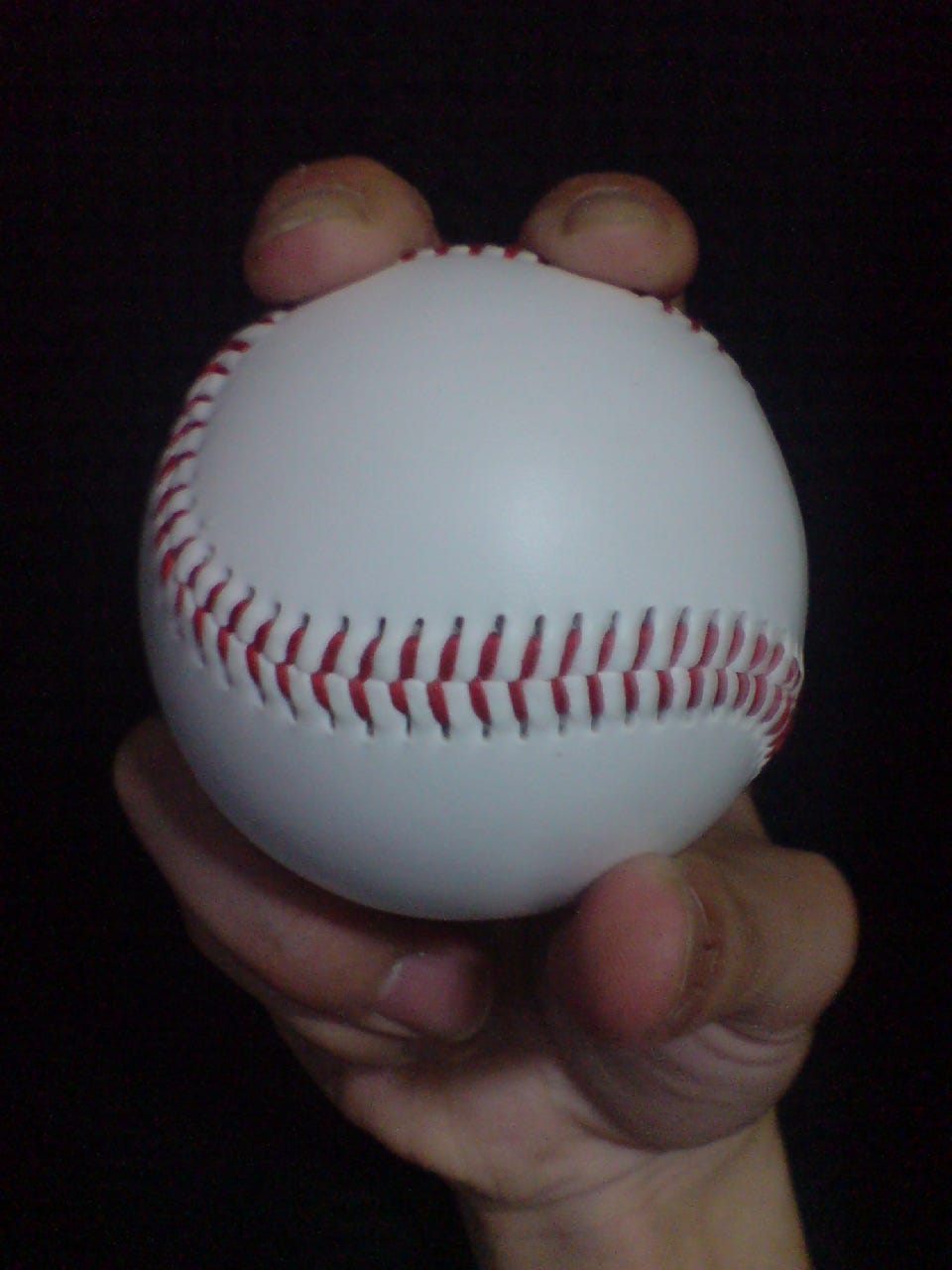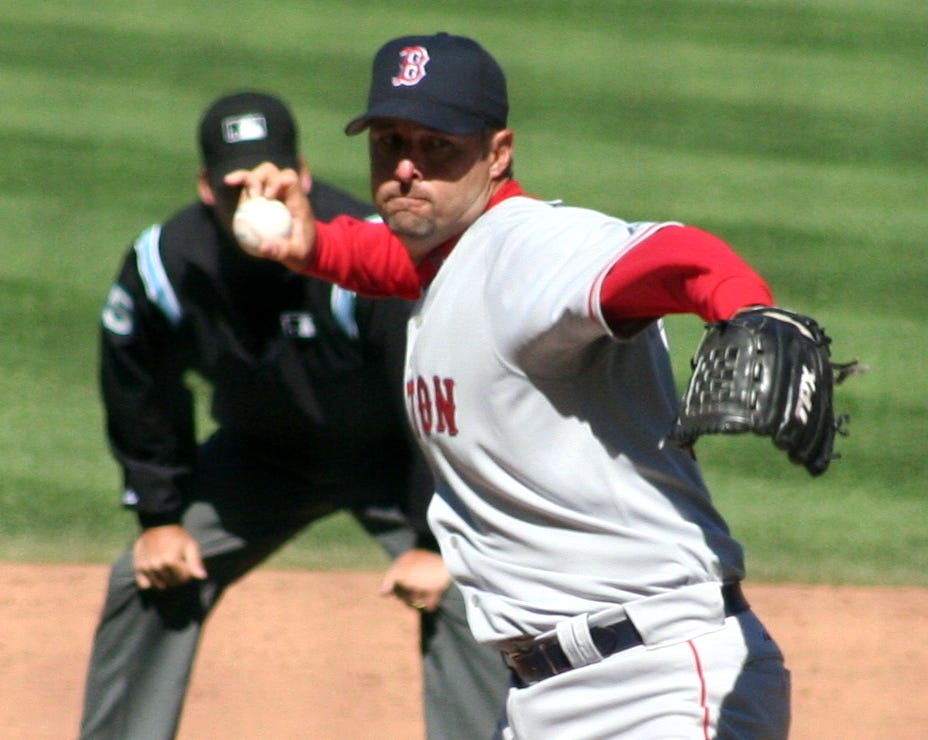On Sunday I saw the news that Tim Wakefield passed away at age 57. If you aren’t a baseball fan, or even specifically a Red Sox fan, the name ‘Tim Wakefield’ probably doesn’t much to you. But as a young Red Sox fan growing up in the late 90s/early 2000s Tim Wakefield was a very big deal to me.
This was not because Wakefield was my favorite player on the Red Sox. Tim Wakefield was not even my favorite pitcher on the Red Sox. If you had asked me if he was a merely good pitcher around that time, I would have said “No”. If you’d told me you he would go on to be the third winningest pitcher in Red Sox history behind Cy Young and Roger Clemens and that he’d end his career with the most strikeouts in franchise history (229 more than Clemens); I would have said, “Wait I thought we were talking about Tim Wakefield, when did you switch to talking about Pedro Martinez?”
Put simply, the reason Tim Wakefield was a big deal to me as a kid was because I thought, “If that guy can be a pitcher in the Major Leagues then I’ve got a shot”.
That sounds mean but that’s only because I was a child and it was the 90s, and like all New Englanders back then I was incapable of expressing my feelings. Nowadays we have a word for this: Representation. When I saw Tim Wakefield on the mound I was able to picture myself up there.
Here’s why:
Throughout his career, most of Tim Wakefield’s pitches clocked somewhere between 45-62 miles per hour. For reference, when I was 12 years old I could throw a pitch 52 mph. I knew this because I made my mom pay an extra $5 for me to throw three pitches next to the radar gun they had set up at the batting cages/laser tag/casino for children on the 5th floor of a decrepit textile mill in Fall River, MA in 1999.
In other words, this meant that I, Richard Barney, a ‘husky’ jeans-wearing Little Leaguer, was already throwing the ball as hard as a pitcher on THE BOSTON REDSOX. Any day now a scout would call the house phone and I would be on my way to Pawtucket. All I had to do was master the Wakefield’s signature pitch: the knuckleball.
How hard could that be?
Turns out throwing a knuckleball is one of the hardest, stupidest, most unnatural motions in sports. Doing it consistently at a high enough level to play 19 seasons (!) of pro ball for the Red Sox—insanity.
For background, the main difference between curveballs, sliders, fastballs, etc. is how you hold the ball. With fastballs there are two varieties: Four-seam and two-seam. For a four-seamer, place your fingers perpendicular to the the seams where they are furthest from each other.

For a two-seamer, place your fingers parallel to the seams where they’re nearest to each other.

Grip determines spin. Spin determines movement. A four-seamer rises. A two-seamer sinks. Got it? Good.
Like other pitches, and as the name suggests, knuckleballs rely heavily on hand positioning. There are actually a few ways to throw a knuckleball but all of them follow the same general idea:
Imagine you are a neanderthal with hand that’s been mangled by a saber tooth tiger.
Brutishly grab the ball with the tips of your fingers like it’s a hot coal from this new invention called “fire”.
Throw the damn thing but not the way you’ve been taught. Instead, violently huck the ball forward in a motion that is 60% baseball throw/50% Highland Games stone-put/3% mom-toss.
Before the ball leaves your hand don’t forget to gingerly ‘push’ the ball with your fingers/knuckles so that you put a rotation on the ball that is precisely equal and opposite to the the way the ball wants to roll off your fingers.
The result: a pitch that does not spin, it “knuckles”.

“Wait… why did step three add up to more than 100%?”
Yes! You’re getting it! Everything about a knuckleball is wrong. When executed correctly, its deep fuckedupedness makes it practically unhittable. Unlike a fastball or even a curveball with a trajectory that can be mathed from velocity, release angle, rotation and aerodynamics; knuckleballs seem to defy the laws of physics, common decency, and the Commonwealth of Massachusetts. Hitting a knuckleball is like trying to meet up with a friend for lunch by accident. You pick a general time and restaurant that seems like it’s their vibe and hope that’s where they decided to go that day. It’s not up to you.
In addition to being nearly unhittable, the knuckleball’s unpredictable properties made it close to uncatchable for my nextdoor neighbor Greg. He would beg, “No more knuckleballs! You suck at them!”. Fair request, but harsh. Even Tim Wakefield, the best knuckleballer in history1 threw a lot of wild pitches so much so that he is 7th all-time for batsmen hit by pitches.
Given it’s unpredictability, the correct etiquette when attempting to throw a knuckleball in a backyard game of catch is to yell “KNUCKLEBALL” before unloading. Greg’s “No more knuckleballs! You suck at them!” edict presented a professional and ethical conundrum. If I told Greg I was going to throw a knuckleball he would be pissed and refuse to keep playing catch. But professionally, I had to keep practicing my knuckleball. Even in 5th grade I was well aware I was not going to be the guy who could throw 100. Knuckleballs were plan B. There was no plan C.
I decided a good compromise that followed the spirit if not the letter of Greg’s plea was to simply not tell Greg a knuckleball was headed his way. My reasoning? I threw a lot of wild pitches pitches back then. Additionally, due to my generally mediocre athletic abilities and child hands, I wasn’t very good at throwing knuckleballs. Most times the ball wouldn’t knuckle. Instead it’d just be a slow, fat pitch, way outside the strike zone. In other words, my “knuckleball” was indistinguishable from my “fastball”.
Very, very rarely I threw a perfect knuckler. Unlike a normal pitch, that blurs through the air as it spins, a knuckleball wobbles slow enough that you can see individual seam stitches. The moment after the ball leaves your hand it seems to stop in mid-air, hovering in empty space. It’s quiet. It almost feels like you have time to walk up to it, pluck it out of the air, and walk back to the mound for a redo. The very next instant the loud smack of the ball in the glove jolts you back to the present at normal speed. Whoa that was cool.
On the other end, catching a good knuckleball is a terrifying, exhilarating experience. To give you an idea how hard it is to catch a knuckleball, the Red Sox always kept a catcher on staff who’s only job was to be Tim Wakefield’s personal catcher. Many of these personal catchers actually gave up on using a standard catchers mitt. Doug Mirabelli used a softball catcher’s mitt. Victor Martinez opted for a first basemen’s glove, baseball’s equivalent of a dip net to give himself a better chance of landing one of Wakefield’s knuckeballs.
And if you’ve ever been on the other side of a knuckleball this will make sense to you. Coming at you, a knuckleball tomahawks in slow motion around a moving center of gravity. A panic shoots through you like if someone said “HEADS UP” before tossing you a live mongoose. If you actually manage to catch one you’re never 100% sure how the ball ended up in your mitt. At the same time it feels inevitable. Deep down you always knew you were special. This proves it: you’re a fucking Jedi.
The handful of times I threw a good knuckleball and Greg caught it: magic. Greg would forget his rule. He’d yell out “WHOA THAT WAS AWESOME” and whip the ball back at me for me to do it again.
But sooner or later the ball would knuckle perfectly around Greg’s glove and directly into his face. Greg would run home crying. Between sobs he’d shout at me and call me a bastard. I felt bad but not that bad because Greg was an only child, his parents made more money than mine, and he had a huge in-ground swimming pool. This built character.
A day or two later he’d forgive me. We’d play catch again. I’d promise, “No knuckleballs”. Eventually I would try one anyways and eventually one would tag Greg in the finger, face, or balls. The cycle repeated until I had to give up my dream of becoming a pro knuckleballer. Greg’s character was not developing quickly enough.
This makes me wonder: who was Tim Wakefield’s childhood Greg?2 To become the best at anything requires a lot of practice so we can conclude that Tim Wakefield, the greatest knuckleball pitcher in history, had a Greg with a lot of patience and a high pain threshold. Furthermore, we can safely assume I would be in my 9th or 10th season with the Red Sox today if Greg had not been such a tremendous pussy.3
Instead, I turn 36 this month. I was right that I wasn’t going to be the guy who could throw a 100 mph fastball. Most times it doesn’t feel like I’m capable of the equivalent of a 100 mph fastball at anything. To me Tim Wakefield is a reminder that maybe I don’t have to throw a 100 mph fastball to be great. Maybe it’s just a matter of figuring out what my knuckleball is, the weird nearly unhuman thing that I’m good at and everyone else sucks at, and then executing consistently at an extremely high level over the course of a preposterously long career.
How hard could that be?
Apparently the “best” is actually Phil Niekro but whatever… before my time and he didn’t play for the Red Sox so who cares. https://en.wikipedia.org/wiki/Phil_Niekro
Did some research after writing this: “After a scout told him that he would never get above Double-A ball as a position player with his skills, Wakefield began developing the knuckleball that made him so well-known, at the time stating, "I just want to be able to say I tried everything I could to make it."[7]”
Greg, if somehow you end up reading this I really am sorry. I promise. No more knuckleballs. This time I mean it. Do you want to play catch?





